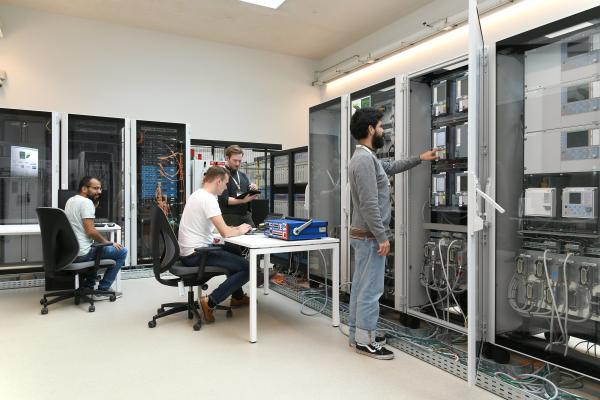In the realm of power transmission, the utilization of underground cables presents a series of technical challenges. These challenges are multifaceted, ranging from integration hurdles to ensuring the integrity of protection systems. Below, we explore four challenges and our objectives to cope with these issues.
1. More underground cables
Underground AC cables are seen as a preferable solution to avoid overhead lines that are visible and have a widely dispersed electromagnetic field. However, underground transmission has different technical limitations and they impose additional technical risks to the system operator. While there is wide agreement on the complexity of putting transmission underground, the exact limitations of remain uncertain. For underground cables in the transmission grid, our research objectives encompass the development of optimization-based methods to increase the Cable Hosting Capacities (CHC) in grids, by improving reactive power management, power system harmonics and resonances. For that purpose, it is imperative to explore new operational concepts in systems characterized by a high penetration of underground cables, such as dynamic reactive power management and topological actions considering resonance risk. Finally, new planning guidelines for Extra High Voltage (EHV) underground cables need to be derived based on the improved operational concepts.
2. Protection of underground cable systems
Protection of underground cable systems is paramount, requiring the elimination of barriers to integration of Inverter-Based Resources (IBRs) and underground cables with respect to AC-side protection integrity. Methods for designing and analyzing High-Voltage Direct Current (HVDC) grid protection integrity are to be developed, alongside initiatives aimed at enhancing the availability of lengthy underground cable systems.
3. Control Interactions
Control interactions within cable-based networks introduce another layer of complexity, primarily attributable to the diverse dynamic characteristics inherent to such systems. Here, the objectives are threefold: identifying fundamental limitations for converter controllers in transmission networks with a high share of AC/DC cables, developing control algorithms for HVDC converters and developing tools and models that allow for the integration of HVDC converters from multiple vendors, as well as the usage of complex control loops such as the so-called “grid-forming” controls.
4. Resilient HVDC Grids
The evolution towards robust HVDC grids is fueled by the ambition to leverage vast renewable resources while acknowledging the inherent trade-offs, such as increased dependency and vulnerability to high-impact events. In the context of resilience, bridging the gap between steady-state optimization and dynamic simulations is crucial for informed decision-making. Hence, our objectives encompass the formulation, evaluation, and implementation of operational strategies tailored for resilient AC/DC grid operation. Furthermore, the development of tools for situational awareness and resilience assessment across various operational time frames is imperative. Lastly, evaluating different grid topologies in terms of their resilience characteristics is essential for building a robust and sustainable power transmission infrastructure.

